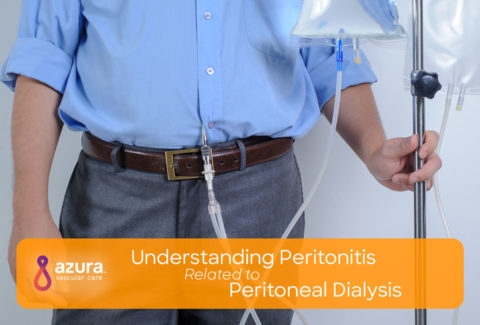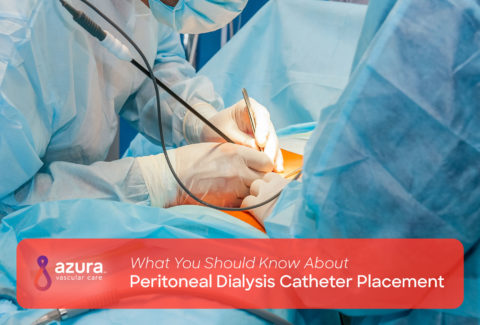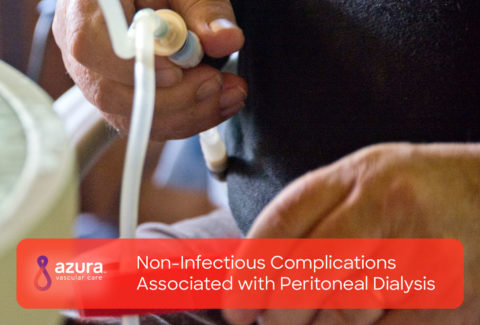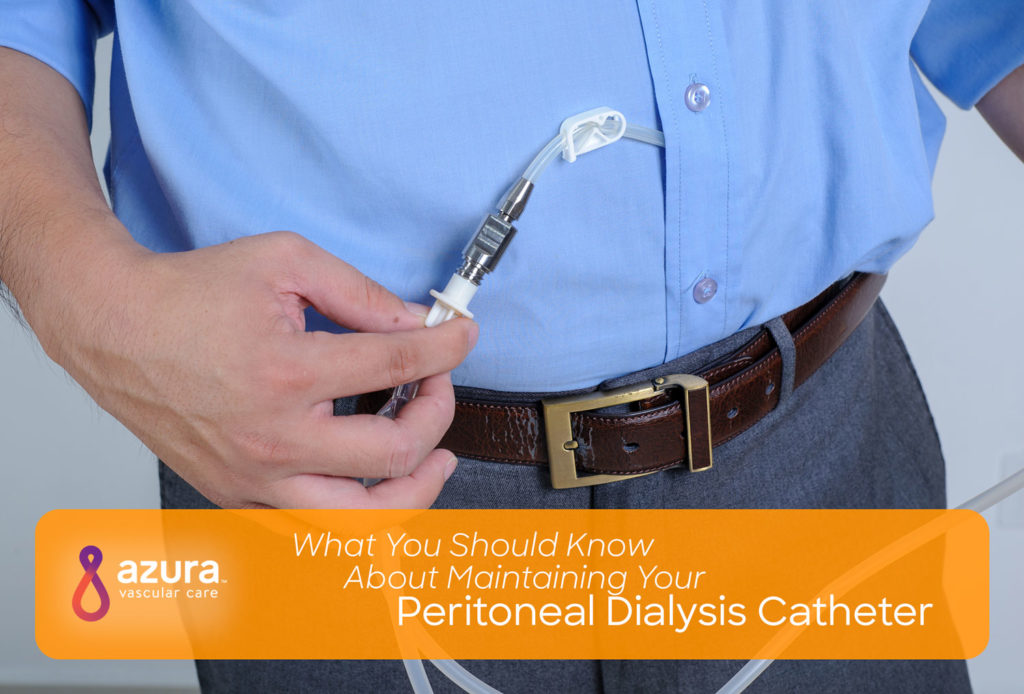
Have you recently been diagnosed with end-stage renal disease (ESRD)? If you’re ready to start dialysis, peritoneal dialysis (PD) can be a convenient option. PD allows you to receive dialysis treatments in the comfort and privacy of your own home. However, deciding to undergo PD is a major commitment. Before your dialysis treatments can begin, you’ll need to undergo a minor procedure to have your PD catheter placed. Next steps are to to take care of your access daily to keep it in good working order for successful dialysis treatments. Read on to learn more about taking care of your PD access.
What is a PD catheter?
Your PD catheter is a flexible plastic tube. The catheter is placed through the wall of your abdomen into the peritoneal cavity. It allows dialysate to enter your abdomen and clean waste products from your blood. Dialysate remains inside your abdomen for a length of time prescribed by your doctor. It then drains out of your abdomen through your catheter into a drainage bag and is discarded. [i]
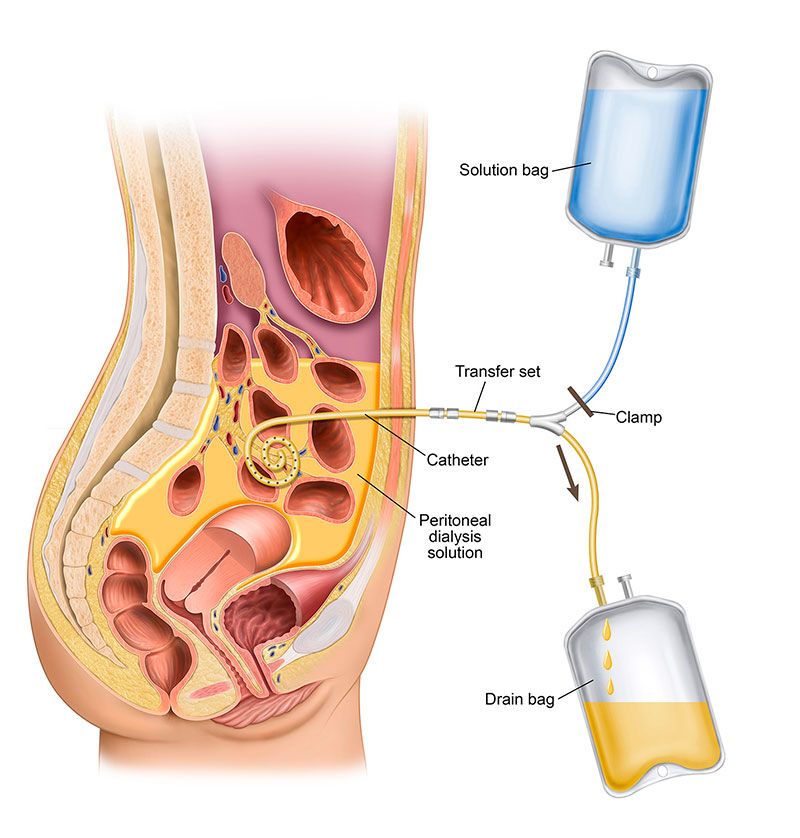
What happens during PD catheter placement?
Catheter placement is usually a straightforward, outpatient procedure. The procedure can often be performed under local anesthesia. PD catheter placement typically takes less than an hour and most people can go home soon after their PD catheter placement procedure is complete. [ii]
Maintaining & Caring for Your PD Catheter
Taking care of your PD catheter is your most important job. Your catheter, also known as a dialysis access, allows you to receive lifesaving dialysis treatments. Access complications can delay your dialysis treatments. These delays can have a significant impact on your health. As you begin dialysis, it’s important to be aware of the potential complications you may face. One of the most common complications is a PD catheter infection.
PD catheter infections
PD catheter infections often start in the skin around your catheter, but they can spread to the catheter tunnel, or to the inside of your abdomen. Some infections can be life-threatening, if left untreated.
Fortunately, you can prevent infections by practicing good hygiene. Check out the following tips for preventing catheter infections: [iv]
- After your surgery, keep your dressings clean and dry.
- Wash your hands before and after touching your catheter.
- Don’t pick or scratch at the skin around your catheter.
- Avoid hot tubs, baths, and swimming pools.
- Bathe or cleanse the area around your catheter each day.
- Change your clothes and/or dressings each day.
- Avoid tight clothing or belts that put pressure on your catheter.
- Don’t sleep in a position that puts pressure on your catheter.
- Wear loose clothing made of breathable materials.
- Avoid strenuous exercise, unless your doctor says it’s OK.
Read the full guide on how to avoid PD catheter-related infections
After your PD catheter placement, your dialysis team will give you detailed instructions on caring for your access. Make sure to follow these instructions carefully. Some limitations, like avoiding bathtubs or changing your sleeping position, may seem annoying, but ignoring these instructions can put you at risk for access complications.
PD catheter obstructions
PD catheters can become clogged. If your access is clogged, you may need to have a nurse or physician help you clear it.
As you perform your PD treatments, keep a close eye on your catheter and the fluid that drains from it. If you notice anything unusual in the way your catheter work either when instilling or draining dialysate, report them to your medical team right away.
What are some signs that something is wrong with my catheter?
As part of your catheter-care plan, you should examine the skin around your catheter every day for signs of infection. Symptoms of an infection may include: [v]
- Pus draining from the access
- Red streaks around the access area
- Red, inflamed skin
- Swelling, warmth, or increased pain
- Fever
As you perform each dialysis exchange, examine the dialysis fluid before discarding it. If you notice that the fluid seems cloudy or discolored, notify your medical team. These can be signs of an infection.
If you have trouble inserting or draining your dialysis fluid, let your medical team know right away.
What happens if I need treatment for an access complication?
Even if you take excellent care of your access, complications can arise. Many people with ESRD have compromised immune systems. That means you may develop an infection even if you take necessary precautions.
If your catheter becomes infected, your doctor may recommend oral antibiotics. He or she may also give you an antibiotic cream to apply to your skin. Unfortunately, oral antibiotics may fail to clear the infection.
If your infection doesn’t respond to treatment, your doctor may recommend intravenous (IV) antibiotics. These treatments are usually administered in a hospital or clinic. In the most severe cases, you may need to be hospitalized or undergo surgery to help remove infected tissue. [vi]
Starting dialysis can be a frightening time but it’s important to keep in mind that the right care can keep you healthy for many years to come. The best thing you can do to protect your health is to choose a reputable care provider. Your dialysis team can provide you with all the support you need to take care of your PD catheter.
Sources:
i Mayo Clinic. (2018, March 22). Peritoneal dialysis. Retrieved February 26, 2019, from https://www.mayoclinic.org/tests-procedures/peritoneal-dialysis/about/pac-20384725
ii Medscape. (2016, January 12). Peritoneal dialysis catheter insertion. Retrieved February 26, 2019, from https://emedicine.medscape.com/article/1829737-overview
iii Moist, L. M., & Al-Jaishi, A. A. (2013). The Upfront Risks of Vascular Access Complications. Journal of the American Society of Nephrology, 24(10), 1509-1511. doi:10.1681/asn.2013070759
iv Berns, J. (2017, August 22). Patient education: Hemodialysis (Beyond the Basics). In Steve Schwab (Ed.), UpToDate. Retrieved February 26, 2019, from https://www.uptodate.com/contents/hemodialysis-beyond-the-basics
v National Kidney Foundation. (2015). Hemodialysis catheters: How to keep yours working well. Retrieved February 26, 2019, from https://www.kidney.org/atoz/content/hemocatheter
vi Fresenius Medical Care. (2016, July). Management of catheter infections. Retrieved February 26, 2019, from https://www.advancedrenaleducation.com/content/management-catheter-infections
